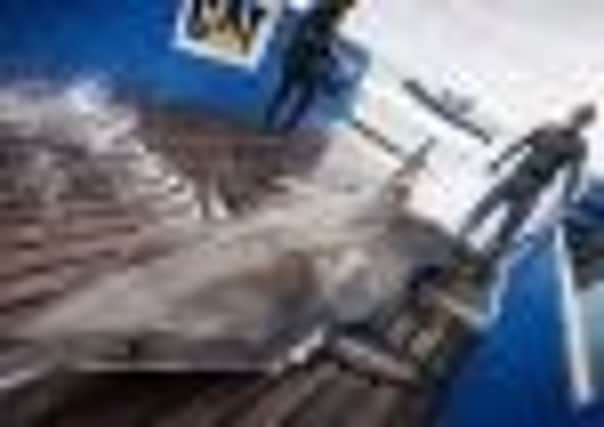Video: 2,000lbs shark captured and tagged in US


Captured off Florida by scientists researching ocean species, the great white shark with the unassuming name was hauled on deck for 15 minutes so she could be fitted with electronic tags.
Lydia is the latest addition to an elite club of great whites in the Atlantic and Indian oceans now being tracked from space.
Advertisement
Hide AdAdvertisement
Hide AdIn an exercise akin to a Formula One pitstop, biologists fitted her not only with a satellite tracking device but also sensors that will reveal valuable biological data, as well as drawing blood, sampling tissue, taking measurements and conducting a scan.


Those involved declared the capture “historic” – Lydia is the first great white ever caught and released off the south-eastern US coast. The data she will yield will assist in more effective shark and ocean conservation, shedding light on a species whose ecology has not been well understood.
“Once again we have opened a window into the life of one of the Earth’s most mysterious creatures,” said Chris Fischer, the expedition’s leader and founding chairman of the not-for-profit research body Ocearch working on the project with the Mote Marine Laboratory in Sarasota, Florida.
Lydia is one of 38 sharks tagged in the Atlantic and Indian oceans, most off southern Africa. Their names belie their fearsome reputation; the list includes Edna, Albert, Philip, Maddox and Mary Lee, a 16ft great white weighing 3,500lbs tagged and released last September off Cape Cod, Massachusetts – the setting for the shark film Jaws.
“To see something that size and be standing next to it was a little bit surreal – like you’re seeing a mythical creature – but also an amazing opportunity scientifically,” said Dr Nick Whitney, a staff scientist at the Mote Marine Laboratory who worked on the expeditions.
During the 15 minutes she was out of the water, Lydia was fitted with a tube that pumped seawater into her mouth and out through her gills, to ensure that she remained oxygenated while the team set to work.
“We all had to stay very, very focused and work very fast to do what we needed in the time we had. The last thing you want to do is to be so much in awe that you screw something up,” said Dr Whitney.
Lydia’s dorsal fin was fitted with a satellite tracker that relays her location every time she surfaces. Other sensors gather biological information such as her temperature. Tissue and blood samples will show whether pollution may have affected her health. A device based on the same technology that allows iPhones to determine which way up they are being held tracks her bodily movements.
Advertisement
Hide AdAdvertisement
Hide Ad“We’re able to detect every single beat of her tail and change in her angle and pitch,” Dr Whitney said. “Her depth is recorded every second and her body temperature every seven seconds.”
The study will also help researchers understand the reproductive and mating behaviour of great whites, profile nursery grounds and identify where they gather.